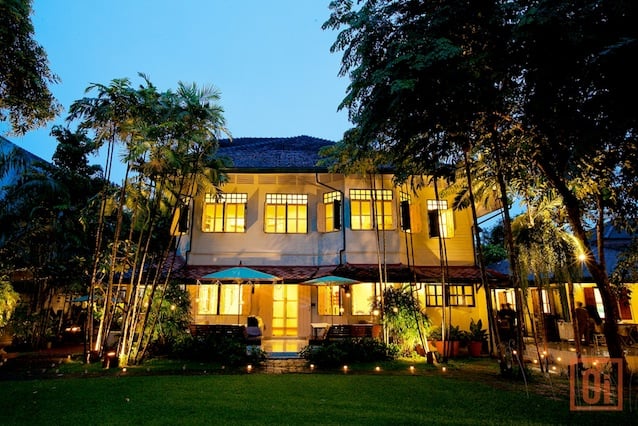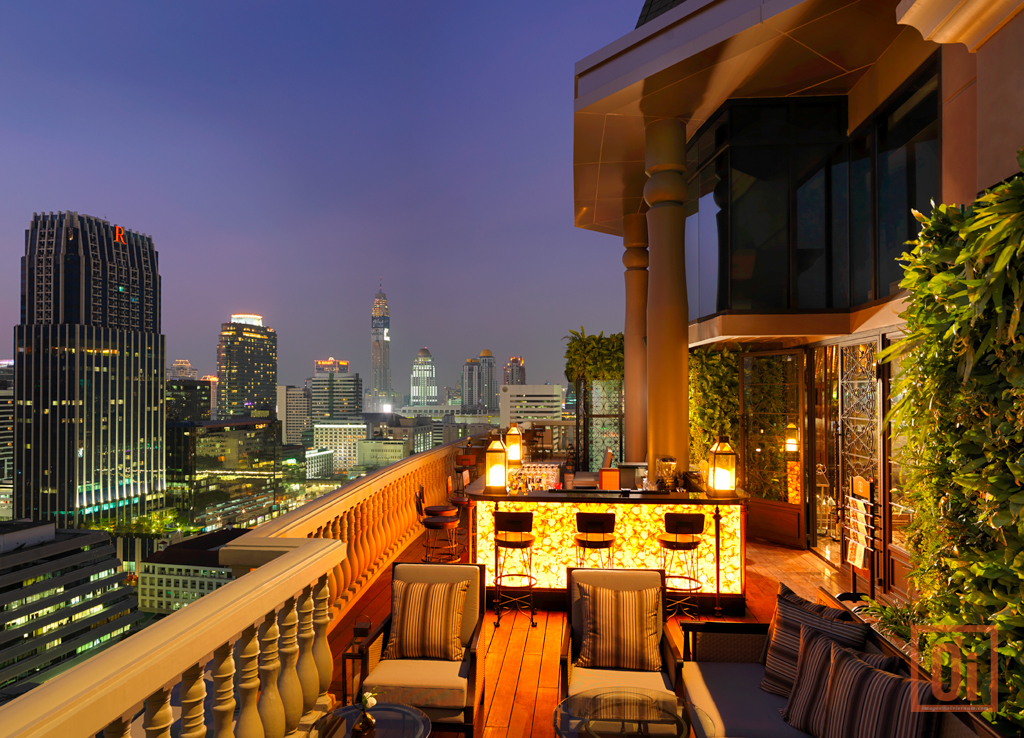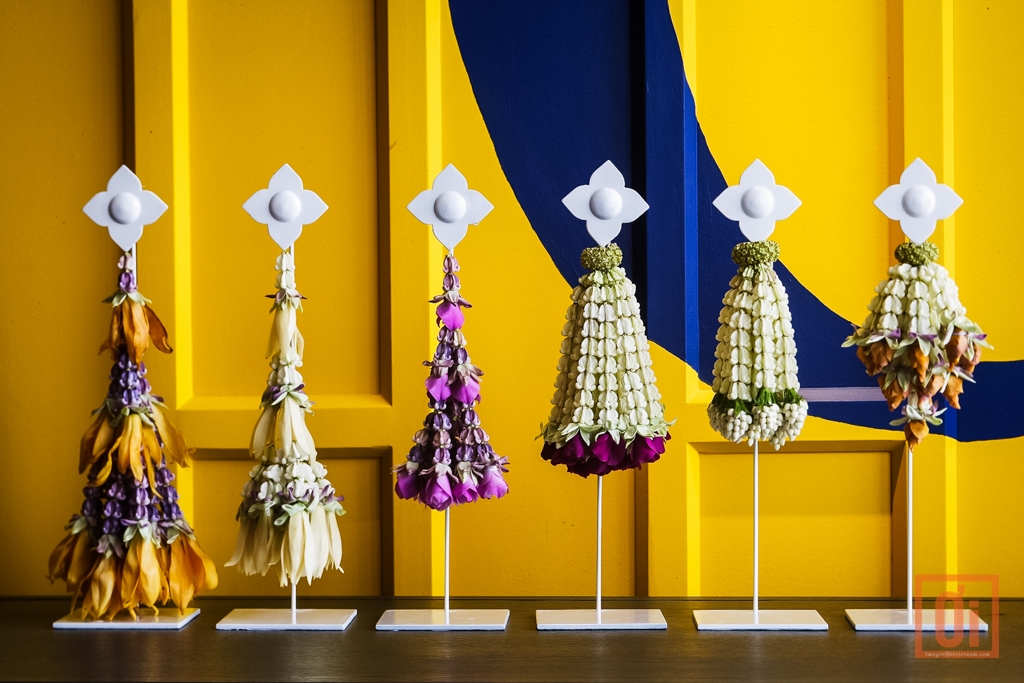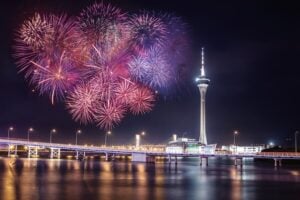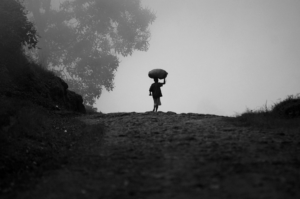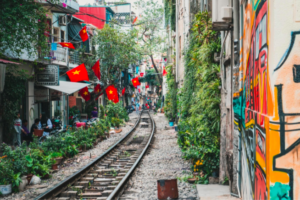Best known for colorful weekend markets, glitzy malls and seedy after-dark activities, Nima Chandler reveals another side of Bangkok that most visitors never get to see…
“I used to walk past this restaurant that was just disgusting. They had blackened rice cookers outside and dirty floors. No farang would ever go in there. But a friend took me there and it was just fabulous. Everyone was there from the hi-so (high society) grandmother, to a funeral group, to a grandson who just became a taxi driver and an older mamasan, who was made up every time. The first time I ate there I got violently ill, probably from one bad garlic shrimp. But it was so good, the next day, I said, ‘We’re going back.’ The place stayed open during the protests as a sign of faith, even when staff had to walk through the Black Shirt front lines. It’s now one of my favorite Chinese seafood places.”
The testimonial above for Ngwan Lee is just one of hundreds of insider locations recommended by Nima Chandler on the Nancy Chandler’s hand drawn map of Bangkok. Arriving in Bangkok in 1969, Nancy took advantage of her Art History background to illustrate her new surroundings, including whimsical Christmas cards for fellow expats. When she and her friends kept getting lost in Bangkok’s bustling open air markets, Nancy started drawing market maps with notations of landmarks to help them find the way back to their cars. When the American Women’s Club of Thailand asked Nancy to draw a one page map of the city showing where the markets were, an idea was born.
Now semi-retired in San Francisco more than 40 years on, the business of running Nancy Chandler Graphics is left to Nancy’s eldest daughter, Nima. Born in Nepal and raised in Bangkok, Nima knows the city like few people do. As we make our way to Yummy Tummy for lunch, a colonial-era house now converted to a small restaurant with a serendipitous garden incongruous amongst the surrounding luxe high rise buildings, Nima cuts through some small sois, pointing out places where she used to play as a child that have now given way to steel and concrete.
After attending university in the US and five years of writing travel trade news, Nima found herself on a beach contemplating her next career move. “Mother came down and asked if I would help her with the business while I was deciding what I wanted to do. She needed help in distributing the map. She was terrified at the idea of growing the business.”
Nima now spends most of her time researching off-the-beaten-path gems. “It’s second nature to me now. I’m constantly looking. Bangkok changes in a blink of an eye. I keep paper notes, electronic notes and notes on my phone of places I stumble across in between printed editions. It takes stamina to do the research, to withhold judgment when judgment needs to be withheld.”
The small company of eight works feverishly to produce updated editions of the printed maps while Nancy, now in her mid-70s, is still the sole illustrator, working from her home in the US. “My mother’s not a prolific artist; she’s not commercial. If I beg and plead, I can maybe get three or four [new illustrations] a year. But for her, it’s not financial. She loves Bangkok.”
For Nima, the maps are not about making lists of top tourist attractions. It’s about selfdiscovery. “We’re not going to tell you what the Top 10 things are. But if you study the maps, you’ll find out what’s the Top 10 for you. It’s different for everyone. It’s like seeing a movie you’ve already seen but now with locals and seeing where they laugh. I saw The Adventures of Priscilla, Queen of the Desert with Thais and they couldn’t understand why you would be a transvestite and not look better than that!”
For the Chandler women, these beautifully functional maps are a labor of love. “People don’t realize how much work goes into them because there’s so much content,” Nima says of the ad-free maps, the pocket directory and the website which is updated monthly with new finds. “Each [new edition] takes about six months of research, calling everywhere again to make sure it’s still open. There’s so much undated stuff out there on travel websites. Places move and websites never get updated. People must go to the wrong place all the time. The maps are so much work, but we’ve made it work for 16 years now. It’s not quite the time to move on yet.”
With help from Nima and the Nancy Chandler map, I set out to create a memorable two day Bangkok itinerary that went beyond the normal movies, shopping and eating experiences typical of a trip to Bangkok.
Closing your eyes to see
What happens in Bangkok after dark is legendary. But for another, more wholesome in-the-dark activity, I headed to the National Science Museum. Walking past the plasma globe and interactive displays, my destination was the Dialogue in the Dark exhibit. Originally created by German journalist / documentarian Andreas Heinecke in 1998 after conducting a training session for a blind colleague, this social franchise pairs blind guides with small groups, working their way through several common settings in absolute darkness. The exhibit has now been shown in over 120 cities in more than 30 countries, Bangkok being one of 19 permanent venues worldwide.
The 60 minute tour, billed as “the greatest experience you’ll never see,” takes visitors through 500 square meters of pitch black galleries including a public park, a bustling city street, a tuk-tuk ride and a cafe. The feeling of disorientation is at first terrifying. Changes in flooring from carpet to paved roads to pebbles had me taking pathetic baby steps. Gentle slopes and small steps became trip hazards. I found myself irrationally waiting for the lights to come on as leaves slashed at my face and common objects like bus signs and mailboxes blocked my path. Then it dawned on me that for the blind, the lights would never come on. Navigating city streets, strange neighborhoods and even the subway were in themselves superhuman feats. Nya, my young guide, left home at the age of 17. “My parents always encouraged me to be independent,” she says. Nya patiently answered my questions, questions that I otherwise would never have dared ask a blind person.
Chanida Sirisub, Science Educator at the National Science Museum, explains, “This exhibit is about diversity, how to live with others who are disabled. Blindness cannot be spread. We want to teach people not to discriminate between ‘us’ and ‘them’. If you’re talking to someone in the dark, you don’t know that you’re talking to a blind person. Your voice doesn’t automatically get softer.”
I used to scoff at the word “brave” when used to describe people who got on with life despite being disadvantaged. After all, what would the alternative be? But this exhibition impacted me far more than I thought it would and I understand why 100 percent of visitors surveyed remembered their experience even five years later.
Dialogue in the Dark is located within the National Science Museum, just at the Sam Yan MRT station. Admission is THB90 (USD3.10) for adults and THB50 (USD1.72) for children. See www.facebook.com/didthailand.
Up close and Personal
The streets of Bangkok are visual overload with golden temples, vibrant markets and endless displays of food. Another way to take it all in is through a camera lens under the tutelage of accomplished photographer Jonathan Taylor. With two Time magazine covers to his name, Jonathan is known for his gritty photojournalism and social documentary photography. He’s done everything from shadowing a special police unit trained to deliver babies on the gridlocked streets of Bangkok, to working alongside Muslim fishermen fighting for survival against heavy trawlers to traveling with malaria doctors in the jungles of Burma.
Jonathan’s typical students at Photography School Asia are travelers interested in an activity holiday and range from the absolute amateur to the semi-professional. His tours often combine photography lessons with travel in the region. “I’ve taken people to the stilt villages on the Tonle Sap in Cambodia and to the hillsides of northern Laos. I try to strike a balance between how keen my students are on straight photography and how much they want to experience Southeast Asia. That said, I’m not a tour operator, but have run about 30 – 40 different types of workshops, each with a narrow focus, involving going out and taking photos followed by critique sessions.”
On one of his popular Bangkok Photography Walks, students might find themselves putting into practice what they learned about exposure, depth of field and compositional awareness in the Pak Khlong Talat Flower Market or in one of the city’s back alleys. A lesson might focus on how to approach someone on the street.
“Some people are so nervous taking someone’s photo that they stand far away and zoom in like they’re in the zoo. But asking someone for a photograph should be no different than going into a 7-11 and asking for a bag of vinegar crisps,” he explains. “They have the right to say ‘yes’ or ‘no’, but there should be no embarrassment. I encourage my students to get into the zone of awareness. You’ve got to step into their life, at least to a certain degree, for the viewer to feel like they’re participating in the photograph. I like the Robert Capa quote, ‘If your photos aren’t good enough, then you’re not close enough.'” The Bangkok Photography Walk is USD270 for a private lesson, and USD150 for each additional student. Jonathan’s studio is easily accessible via the Hua Lamphong MRT. See www.photographyschoolasia.com.
Cheese and Cheesy
Whether because it overwhelmingly reminds us of home or simply because it tends to be exorbitantly priced, we can never seem to get enough of cheese. Enter the Cheese Room at the Millennium Hilton. With over 70 kinds of cheese, many of them artisanal, and 40 on display at any given time, it’s three times as large as the next one of its kind. A walk into the climate-controlled room, off of the ground level FLOW restaurant overlooking the Chao Phraya River, is like entering a ‘cathedral of cheese’. Soft, semi-soft and hard cheeses from around the world are represented, the display broken up by arrangements of condiments ranging from fresh strawberries and grapes to dried guava and apricot to caramel, honey, jams and fresh baked bread.
“The Cheese Room offers the largest selection of cheeses in Bangkok,” says Executive Chef Lorenzo Rosso. “We take pride in providing not only the best cheese, but the most renowned and unique cheeses available worldwide.”
Cheeses include Reblochon de Savoie, a classic soft cheese from Savoie, France, Colston Basset Stilton, blue cheese from Nottinghamshire, England and Testun al Barolo, a semi-firm Italian cheese coated with pressed grapes used to make Barolo wine. Labels announce the country of origin, how long the cheese has been ripened, fat content and from what kind of milk the cheese was made.
The daily Dinner Buffet at FLOW is THB1,800 (USD61.94) nett per person which includes access to the Cheese Room. Additionally, experienced wine and cheese butlers are on hand to help you find the perfect pairing.
For an altogether different cheesy experience, The Royal Dragon does not fail to deliver. Opened in 1991, this Chinese seafood restaurant earned a place in the Guinness Book of World Records for being the largest restaurant in the world, with 5,000 seats spread over 33,800 square meters comprised of more than 30 buildings, including open air tented pavilions, banquet rooms and even a seven-story pagoda. The grounds are so extensive that waiters outfitted in purple satin zip around on roller skates. A twice nightly show features Thai traditional dancing and opens with the “Flying Caterer”, a waiter hooked up to a zip line delivering a smoking bowl of what is presumably Tom Yam the entire length of the complex.
While mainly catering to tour groups (having 3,000 lunch guests is a regular occurrence), the extensive 200 item menu yields surprisingly tasty dishes, specializing in live seafood like drunken squid, curry crab and sea urchin in red gravy.
The Royal Dragon is located a short taxi ride away from the On Nut BTS station. See www.royal-dragon.com.
Flower Power
Visitors cannot help but notice the profusion of flowers on Bangkok’s streets. From jasmine garlands hanging from taxi rearview mirrors to bouquets adorning altars in front of every major shopping mall, the bulk of these flowers come from Pak Khlong Talat, Bangkok’s largest flower market. Open 24/7, the hub of the market is a huge bustling warehouse filled with blossoms of every hue and variety. Think of it as a much better smelling Tsukiji, with sprays of orchids, carnations and marigolds replacing tuna, crab and octopus.
Originally a floating market over 200 years ago, Pak Khlong Talat is now a one-stop shop for street sellers buying up jasmine buds and rose petals by the kilo to thread into the ubiquitous fragrant garlands, florists stocking up for the day, housewives looking to spruce up their homes, and everyone in between. The activity in the market spills out into small shops in the surrounding blocks, carrying fresh fruit, flowers and other items for the devout.
Locals like to visit the market near midnight when it’s cool and quiet. Photographers might find the early dawn hours especially appealing, just after fresh shipments of flowers arrive from northern Thailand and the money trees are set out, a hopeful harbinger for good sales to come.
For a more in-depth look at how flowers and Thai life are intrinsically intertwined, visit the Museum of Floral Culture in the Dusit area. Opened last August by engineer turned author, designer, and Thai floral artist Sakul Intakul, the private museum consists of six exhibits in a gorgeous golden teak house (previously the Royal Guard House). Exhibits highlight the floral cultures of neighboring Asian countries, as well as how flowers figure into everyday Thai life.
“In the Buddhist religion, flowers represent respect. If you give food to monks, you will be well-fed in the next life. If you give flowers, you will have beautiful appearance,” says Patcharachai Laohakul, the museum’s coordinator. “Every activity of [Thai] life, from birth until death, uses flowers – from the ordination ceremony for monks, to when people get married to the death ceremony. Flowers mark every step of life.”
Admission is THB150 (USD5.16) for adults, THB75 (USD2.58) for children, inclusive of a guided tour in English. See www.floralmuseum.com.
Where History Meets Luxury
Many travelers to Bangkok visit the Jim Thompson House, a museum dedicated to the man who practically single-handedly introduced the world to Thai silk. While no photos are allowed, the next best thing, or actually better, is a stay in an actual Jim Thompson home.
In the 60s, Jim Thompson was friends withsocialite Connie Mangskau; the two of themcollected antique teak houses in Ayuddhya and rebuilt them in Bangkok. Connie’s homehosted legendary parties courting guests like Jacqueline Kennedy, John Rockefeller, Henry Ford and Roger Moore. What was Bangkok’s most famous private residence is now the centerpiece of The Siam, a collectionof 39 suites and villas set right on the Chao Phraya River.
Owned and operated by the Sukosol family, Thailand’s entertainment dynasty who is involved in music, television, books and films, The Siam is the pinnacle of contemporary meets traditional living. Openfor only nine months, the back story of the property garnered much attention during itsthree years of construction.
“The valuation without the antique collection is around USD60 million,” says General Manager Jason Friedman. “That’s about USD1.5 million per room.”
The family contributed their personal collection of antiques, freely on display throughout the deceptively large property. “Building around antiques and for antiques was a construction challenge. The Ban Chiang pottery is between 3 and 5,000 years old. The Chinese horse is priceless,” says Jason of the galleries spread all about the property which includes a piano conservatory, an English garden, a private theater and a Muay Thai training gym. “[TheSukosols] built this as an art project. They built it for people’s reactions. I advised them,’Don’t share so much! This isn’t a public park,’ but they wanted Thais to be able to come see it.”
The Siam is located in the historic Dusit District, home to Vimanmek Mansion, a former royal palace and numerous other off-the-well-worn tourist path sights. “Just y staying in Old Town, there’s so much more to see and do within walking distance or along the river. The trip between here andthe Skytrain is spectacular. That’s what othereople do for their river tour. For us, that’s our commute,” says Jason of the 30 minute private boat trip between The Siam and the Saphan Taksin Pier.
Additionally, all guests receive the Nancy Chandler Bangkok map to ensure they get the most out of their Bangkok stay. Doubles start from USD561++ including breakfast. See www.thesiamhotel.com.
ART DECO CHIC
Trendy rooftop bars are de rigueur in bangkok and The Speakeasy is Nima Chandler’s favorite hangout spot. Taking up the entire 24th and 25th floors of the Hotel Muse, the Speakeasy harkens back to a worldlier, sophisticated time, when travel was synonymous with luxury. Revelers can choose between cozy nooks filled with tufted club chairs under an art deco glass dome and open air seating with unimpeded views of the glittering city.
On the Old Siam design scheme of the hotel, general manager Nicolas Peth says, “King Rama V was the first king to really travel thanks to the introduction of railways, cruise liners and airplanes. He brought back a lot of what he saw of art deco from europe, especially France. We’ve kept that thread alive throughout the hotel.” The unique Old Siam meets fin de siecle France theme is evident in everything from the decorative pith helmets and vintage suitcases to the old bogart movie playing silently in The Salon and the art deco clawfoot tubs. The mood lighting and trendy yet low-key music curated by French DJ Plaisir de France creates the aura of being in a very exclusive club.
In a crowded hotel market like bangkok, dominated by either budget guesthouses or sterile business hotels, The Hotel muse, looking very much like the classy love child of the Westin and edgy designer ed Hardy, is a refreshing standout.
Hotel Muse is a five-star hotel, just 5 minutes’ walk from the Chidlom bTS. Doubles start at USD130++ including breakfast. See www.hotelmusebangkok.com.

